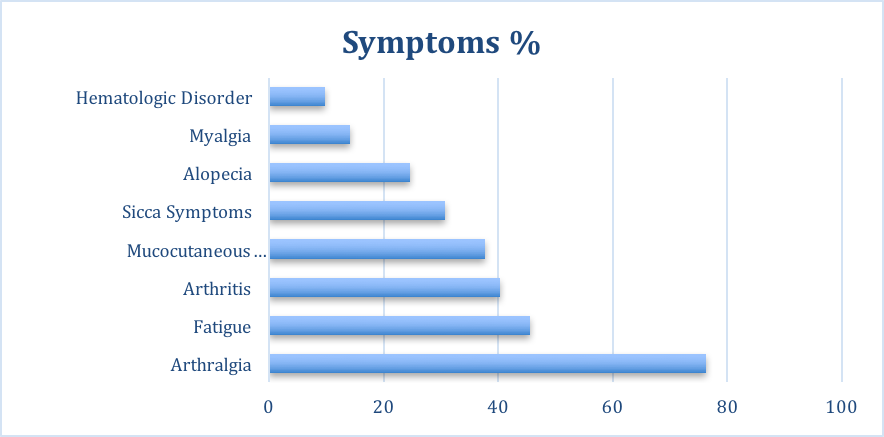Session Information
Session Type: ACR Poster Session C
Session Time: 9:00AM-11:00AM
Background/Purpose: To evaluate the change in ANA titers as a proxy for progression in patients with undifferentiated connective tissue disease (UCTD) treated with hydroxychloroquine (HCQ) in a large academic clinical practice.
Methods: This study included all patients diagnosed with UCTD according to the preliminary classification criteria (Mosca et al 1999) seen at the Columbia University Lupus Center in New York from January 2015 to December 2016 that had at least 6 months of follow-up. Clinical and immunological variables were ascertained. Chi squared tests were used to compare the characteristics between treated and untreated patients: demographic characteristics, number of ACR criteria, SLICC criteria, individual symptoms and laboratory values.
Results: 114 patients were identified; 94% female, mean age at diagnosis of 44 years (range 19 – 81); 42% were Caucasian, 16% Hispanic and 12% Black/African American; median disease duration of 5.6 years (1-27). The most prevalent symptoms that required medical attention are described in Figure 1.
51 % of patients had a family history of autoimmune diseases.
94% of patients had positive antinuclear antibody (ANA) titers and 6% were ANA negative Ro/SSA+, 88.6% had titers ≥ 1:160. Interestingly, 17.5 % of the patients studied met SLICC SLE criteria. Over half of the patients, 65(57%) were treated with HCQ and 49(43%) were not treated. The patients treated with HCQ were more likely to also meet SLICC criteria (16 vs. 4, p=0.04), have arthritis (33 vs. 12; p=0.03), have a history of low complements (19 vs. 5, p=0.03); arthralgia and fatigue were common but not different between groups, arthralgia (52 vs. 34; p=NS), and fatigue (36 vs. 15; p=NS).
Of 62 patients that had follow-up ANA testing in the same laboratory, 40 had no change in ANA titer (ANA titer within +/- one dilution was considered stable), 10 had an increase, and 11 had a decrease in ANA titer. 35/62 (56 %) patients had been treated with HCQ for ³5 months, the majority remained ANA+ with stable/decreased titers. Of patients with dsDNA+ on HCQ 4/5 became negative.
Conclusion: Data from this single-center cohort of patients with UCTD show that patients treated with HCQ have multiple clinical criteria and low complement, suggesting that rheumatologists treat pre-clinical autoimmunity in the setting of clinical symptoms. Follow-up ANA/dsDNA testing suggests that HCQ may prevent increase in ANA titers or dsDNA autoantibodies and disease progression in UCTD. Longitudinal studies are needed to evaluate the long-term impact of HCQ on clinical and serologic outcomes in UCTD.
To cite this abstract in AMA style:
Epstein H, Pena DP, Di Cocco B, Kapoor T, Askanase A. The Role of Hydroxychloroquine in the Treatment of Undifferentiated Connective Tissue Disease [abstract]. Arthritis Rheumatol. 2017; 69 (suppl 10). https://acrabstracts.org/abstract/the-role-of-hydroxychloroquine-in-the-treatment-of-undifferentiated-connective-tissue-disease/. Accessed .« Back to 2017 ACR/ARHP Annual Meeting
ACR Meeting Abstracts - https://acrabstracts.org/abstract/the-role-of-hydroxychloroquine-in-the-treatment-of-undifferentiated-connective-tissue-disease/
